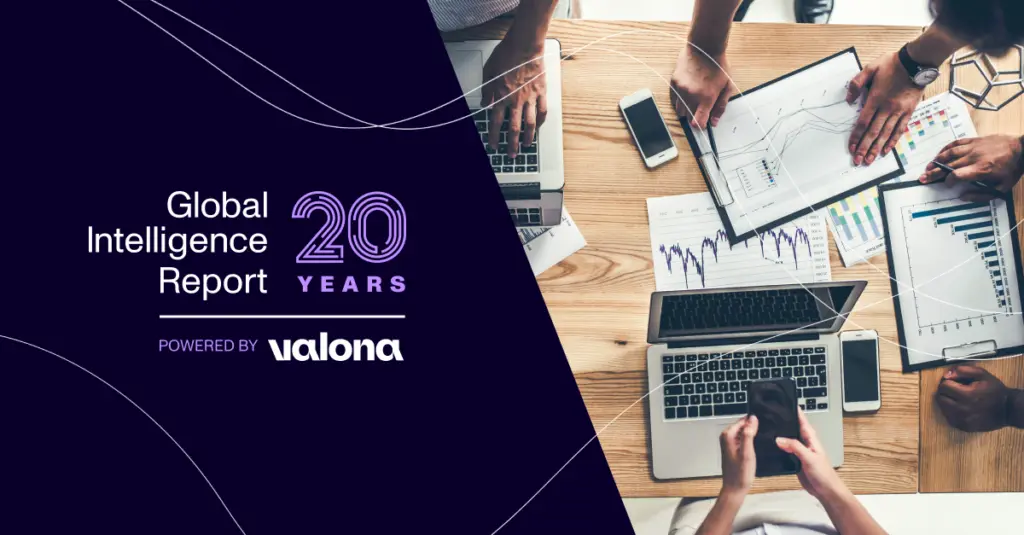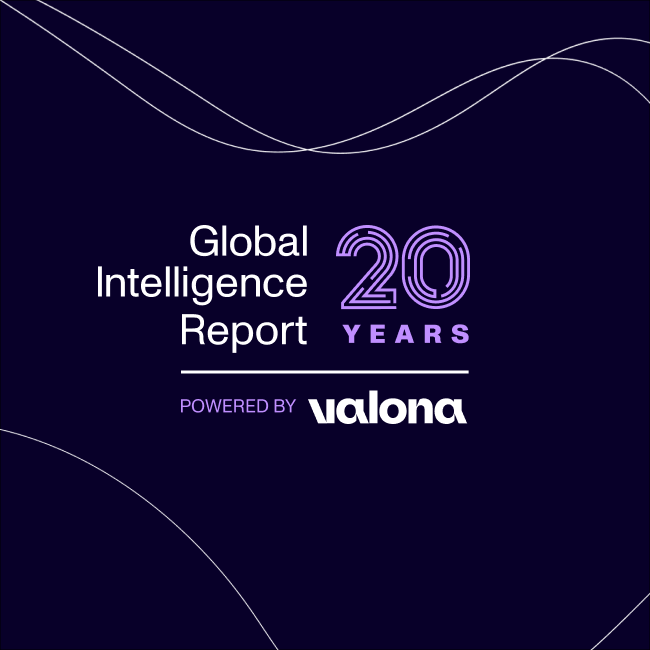
Strategic Foresight Methodology Explained
Learn about strategic foresight methodology and how it helps businesses anticipate change, mitigate risks, and seize opportunities. Explore key techniques like scenario planning and trends analysis.
The future is rarely silent—it’s always dropping hints. Strategic foresight methodology helps you tune into those signals, turning possibilities into actionable strategies that keep you ahead of the curve.
It’s not just about predicting what’s next but preparing for it with clarity and confidence. With countless approaches to explore, figuring out where to begin can feel like stepping into a labyrinth.
This guide walks you through key methodologies, making the complex refreshingly simple:
- Trends Analysis
- Scenario Planning
- Systems Mapping
- Delphi Method
- Backcasting
- Future Wheel Analysis
- Environmental Scanning
Strategic foresight methodology: A framework for navigating the future
Strategic foresight methodology provides a structured way to explore and prepare for future possibilities. Unlike traditional planning, which often assumes a predictable path, foresight focuses on adaptability and flexibility, helping organizations thrive in uncertain environments.
At its core, this methodology helps businesses anticipate changes, assess risks, and uncover opportunities. It allows organizations to stay proactive by considering multiple potential futures rather than reacting to unforeseen challenges.
Whether navigating shifting market conditions or preparing for technological disruptions, foresight ensures your strategies are built to last.
“Strategic foresight methodology equips businesses with the tools to navigate uncertainty, anticipate change, and seize opportunities with confidence.”
Strategically, foresight methodologies empower businesses in several ways. They enhance risk management by identifying and addressing vulnerabilities before they become critical. They also support opportunity identification, enabling companies to innovate and capture emerging market trends.
Additionally, these approaches guide resource allocation, ensuring efforts align with long-term goals and potential future scenarios.
Unlike traditional forecasting, which may limit perspectives to linear growth or decline, strategic foresight embraces complexity. It integrates data, trends, and expert insights to create flexible strategies that adapt to changing landscapes.
Why is strategic foresight methodology important?
Strategic foresight methodology improves decision-making by helping leaders analyze multiple scenarios and make informed choices. Instead of relying on guesswork, businesses can anticipate outcomes and choose strategies that align with their long-term goals.
For example, a company planning its market entry can prepare for both favorable and challenging conditions, staying ready no matter what unfolds.
Exploring different futures encourages innovation and growth, uncovering new opportunities for products, services, and markets. By analyzing trends like automation or sustainability, businesses can identify unmet needs and spark creative solutions.
“Strategic foresight methodology enables organizations to make smarter decisions, embrace innovation, and confidently navigate risks in a dynamic world.”
For instance, foresight might reveal a growing demand for eco-friendly packaging, inspiring new product lines that give your company an edge.
Risk management becomes more effective when organizations use foresight to anticipate vulnerabilities and prepare for disruptions. Addressing potential risks ahead of time ensures businesses stay competitive and avoid costly surprises.
To illustrate, identifying supply chain risks early allows companies to establish backup plans, ensuring smooth operations even during unexpected challenges.
Strategic foresight methodology isn’t just about avoiding risks—it’s about finding new opportunities and thriving in uncertainty. By embracing this approach, businesses can stay adaptable and proactive in a constantly changing world.
Ready to elevate your strategic foresight game? Explore Valona’s foresight tools! Our market intelligence solutions deliver real-time insights to help you anticipate trends, plan for diverse scenarios, and navigate uncertainty with confidence. Stay ahead of the curve, seize opportunities, and make informed decisions every step of the way.
Key methodologies and techniques in strategic foresight
1: Trends analysis
Trends analysis tracks patterns in technology, society, and the economy to identify early signals of change. Understanding these patterns helps businesses predict shifts and adapt strategies ahead of disruptions. This approach keeps organizations competitive and aligned with evolving market dynamics.
Tools like trend reports, Google Trends, and market research studies deliver valuable insights. These resources uncover emerging opportunities and risks, ensuring businesses make informed decisions.
Combining qualitative observations with quantitative data strengthens forecasting and highlights both current trends and potential future developments. Businesses using trend analysis remain agile and better equipped to innovate.
To maximize the value of trends analysis:
- Regularly review industry-specific reports and studies to track key patterns.
- Use online tools like Google Trends to spot emerging topics gaining momentum.
- Monitor social media and forums to understand shifts in customer sentiment and behavior.
- Integrate findings into strategy discussions to align with market needs and stay ahead of competitors.
Trends analysis empowers businesses to foresee changes, adjust strategies effectively, and seize opportunities in evolving markets.
2: Scenario planning
Scenario planning creates detailed “what if” scenarios to assess how different futures could affect your business. It provides a flexible way to explore a range of possibilities, from optimistic growth to significant disruptions.
This approach ensures your strategies are adaptable and grounded in proactive decision-making.
Focus on crafting optimistic, pessimistic, and moderate scenarios to cover diverse outcomes. Each scenario highlights potential risks and opportunities, helping organizations refine strategies for resilience.
Scenario planning doesn’t aim to predict the future—it prepares businesses to succeed regardless of the circumstances. This practice is valuable for long-term planning and navigating uncertainty with confidence.
To effectively apply scenario planning:
- Identify key drivers of change, such as market trends or technological advancements, to ground your scenarios in real-world data.
- Build detailed narratives for each scenario, imagining how events unfold and their implications over time.
- Test strategies against these scenarios to identify gaps and refine plans for greater flexibility.
- Engage teams from different departments to gather diverse perspectives and ensure comprehensive planning.
Scenario planning equips businesses to anticipate challenges, seize opportunities, and stay agile in dynamic environments. It transforms uncertainty into a tool for strategic innovation and long-term success.
3: Delphi method
The Delphi Method uses expert insights collected through iterative surveys to achieve a consensus on future trends and uncertainties.
This structured approach is ideal for tackling complex topics, like advancements in AI or climate change policies, where expert judgment is invaluable. It’s particularly effective for long-term planning and forecasts in industries facing rapid change or uncertainty.
The method facilitates collaboration among specialists, refining predictions through multiple rounds of surveys.
Experts anonymously share their insights, helping reduce bias and ensuring a balanced perspective. As ideas converge, the process highlights the most likely trends and scenarios, offering clear guidance for decision-making.
To successfully implement the Delphi Method:
- Select a diverse panel of experts with knowledge spanning various disciplines or areas of focus to ensure well-rounded insights.
- Conduct iterative surveys over several rounds, using feedback from earlier responses to refine and clarify ideas.
- Encourage anonymity to prevent dominant voices from swaying the group and to promote honest input.
- Summarize and analyze findings to identify patterns, emerging trends, or consensus points that can shape your strategies.
The Delphi Method transforms expert knowledge into actionable insights, enabling businesses to navigate uncertainty with precision and confidence. It’s a powerful tool for forecasting, risk assessment, and strategic planning.
4: Systems mapping
Systems mapping helps businesses visualize how different factors and trends interact within a complex system, offering insights into leverage points and potential ripple effects.
This approach is especially useful for tackling interconnected challenges in areas like policy development, supply chain management, or strategic decision-making.
A systems map creates a clear picture of relationships and dependencies, enabling organizations to anticipate unintended consequences and identify hidden opportunities.
It’s a powerful tool for navigating complexity, helping teams see beyond isolated issues to understand the bigger picture. For example, mapping how consumer behavior impacts supply chains and environmental policies can guide more effective strategies.
Steps to create a systems map:
- Identify key components of the system, such as stakeholders, processes, and external factors that influence outcomes.
- Visualize connections to understand how changes in one area could trigger effects elsewhere. For example, a policy change might affect operations, costs, and customer behavior simultaneously.
- Highlight leverage points where small interventions can drive meaningful results. These areas often hold the key to achieving significant impact with minimal effort.
- Consider feedback loops by identifying cycles where outcomes reinforce or counteract each other, like how increased demand impacts resource availability.
Systems mapping empowers organizations to approach problems holistically, uncovering risks and opportunities that might otherwise go unnoticed. By visualizing the bigger picture, businesses can craft more informed, impactful strategies.
5: Backcasting
Backcasting starts by imagining a desired future outcome and working backward to outline the steps needed to reach it.
This approach is perfect for long-term planning, especially when tackling ambitious goals like sustainability initiatives or industry-leading innovations. By focusing on the endpoint, backcasting provides clarity and direction, ensuring that every action aligns with the larger vision.
Unlike traditional planning, which often starts from the present, backcasting encourages organizations to think boldly about the future.
For example, a company aiming for carbon neutrality by 2040 can map out necessary milestones like adopting renewable energy, optimizing supply chains, and launching eco-friendly products.
Steps for effective backcasting:
- Define your future goal in detail. Whether it’s becoming a market leader or achieving net-zero emissions, ensure the target is clear and measurable.
- Identify milestones along the way, such as intermediate achievements or technological advancements needed to support the end goal.
- Map out necessary actions to reach each milestone, breaking them into manageable steps.
- Align current strategies with the roadmap, ensuring that everyday decisions contribute to long-term success. Evaluate progress periodically to adjust the plan as needed, keeping the organization on track despite changing conditions.
Backcasting transforms big ideas into actionable plans, empowering businesses to take bold steps toward transformative goals. It’s a method for turning vision into reality, one strategic milestone at a time.
6: Future wheel analysis
Future Wheel Analysis identifies and visualizes the ripple effects of a specific change or event, helping organizations grasp its broader implications.
This method dives into the immediate, secondary, and tertiary impacts of emerging trends, technologies, or disruptions. It’s a valuable tool for strategic planning, ensuring businesses understand the cascading consequences of significant developments.
For example, the widespread adoption of AI could initially streamline operations (direct impact), reduce workforce needs (secondary impact), and spark debates about ethical AI usage (tertiary impact).
Future Wheel Analysis helps map these layers, offering a comprehensive view of potential outcomes.
Steps to apply future wheel analysis:
- Define the primary change or event you want to analyze. For instance, it might be new environmental regulations or a breakthrough technology
- Map immediate effects, detailing how the change directly influences your business or industry.
- Explore secondary and tertiary impacts, connecting broader consequences and potential ripple effects over time.
- Incorporate findings into strategic planning, identifying opportunities and risks to shape informed decisions.
- Review and refine the wheel regularly to stay aligned with evolving circumstances or data.
Future Wheel Analysis ensures organizations don’t just react to change but understand its full scope, enabling proactive and well-rounded strategies. It’s a method that turns complexity into clarity, making decision-making smarter and more informed.
7: Environmental scanning
Environmental scanning keeps a constant watch on external factors—political, economic, social, and technological—so businesses can identify potential disruptions and stay proactive.
This ongoing process ensures organizations catch emerging trends early, allowing them to adapt strategies before challenges escalate or opportunities fade.
For example, tracking regulatory changes might reveal upcoming compliance requirements, while monitoring social trends could highlight shifts in customer values, such as increased demand for sustainability.
How to conduct effective environmental scanning:
- Review diverse sources regularly, including news, market reports, industry publications, and global updates.
- Leverage tools like social listening platforms to monitor conversations, sentiment, and keywords across social media and forums.
- Use data aggregation software to consolidate insights from multiple sources into actionable intelligence.
- Incorporate findings into strategy sessions to keep foresight activities informed by real-time developments.
Environmental scanning isn’t just about spotting risks—it’s a proactive approach to uncover opportunities and align your organization with evolving market realities.
This method complements other foresight techniques, ensuring your business stays agile and competitive in a dynamic world.
Future-proof your strategy with strategic foresight
Strategic foresight is more than a planning tool—it’s a vital approach for navigating uncertainty and staying ahead in today’s dynamic business landscape.
Techniques like scenario planning, trend analysis, and systems mapping enable organizations to anticipate changes, seize opportunities, and mitigate risks effectively.
Embedding foresight methodologies into your decision-making process ensures your strategies remain flexible and proactive. Whether you’re exploring market trends or preparing for potential disruptions, consistent use of foresight empowers your organization to thrive in any situation.
Valona’s on-demand webinar dives deep into the art of uncovering trends, finding opportunities, and outmaneuvering competitors through foresight techniques that truly work. Packed with actionable insights and real-world applications, it’s a must-watch for anyone serious about sharpening their competitive edge.
Curious to see how foresight can transform your strategy? Watch the webinar now and unlock the tools to future-proof your success.
FAQ
What is strategic foresight methodology?
Strategic foresight methodology is a structured approach to exploring future possibilities and preparing for uncertainty. It uses techniques like trend analysis, scenario planning, and systems mapping to help organizations anticipate changes, mitigate risks, and identify opportunities. Unlike traditional planning, foresight focuses on adaptability and flexibility, empowering businesses to thrive in dynamic environments.
Why is strategic foresight important for businesses?
Strategic foresight helps businesses make informed decisions by analyzing potential futures and identifying risks or opportunities. It drives innovation, improves risk management, and ensures strategies align with long-term goals. By staying proactive rather than reactive, businesses can navigate uncertainty, adapt to market changes, and seize emerging opportunities with confidence.
What are some common techniques used in strategic foresight?
Common techniques include trend analysis, scenario planning, and systems mapping. Trends analysis tracks market patterns to spot early changes. Scenario planning explores “what if” futures to test strategies. Systems mapping visualizes interconnections and ripple effects. These methodologies provide actionable insights, enabling organizations to plan effectively for diverse futures.
How can organizations start implementing strategic foresight?
Organizations can start by identifying key goals and challenges, then selecting relevant foresight techniques. Begin with trends analysis or scenario planning to explore potential futures. Use tools like expert panels, reports, and data aggregation software for insights. Gradually integrate foresight into strategy sessions and decision-making to build a future-ready approach.
How does strategic foresight differ from traditional forecasting?
Traditional forecasting often assumes a single likely outcome, focusing on linear growth or decline. Strategic foresight, however, considers multiple futures and embraces uncertainty. It prioritizes adaptability, using diverse methodologies to anticipate changes and uncover opportunities. This proactive, flexible approach ensures organizations remain resilient in the face of complex, evolving challenges.




